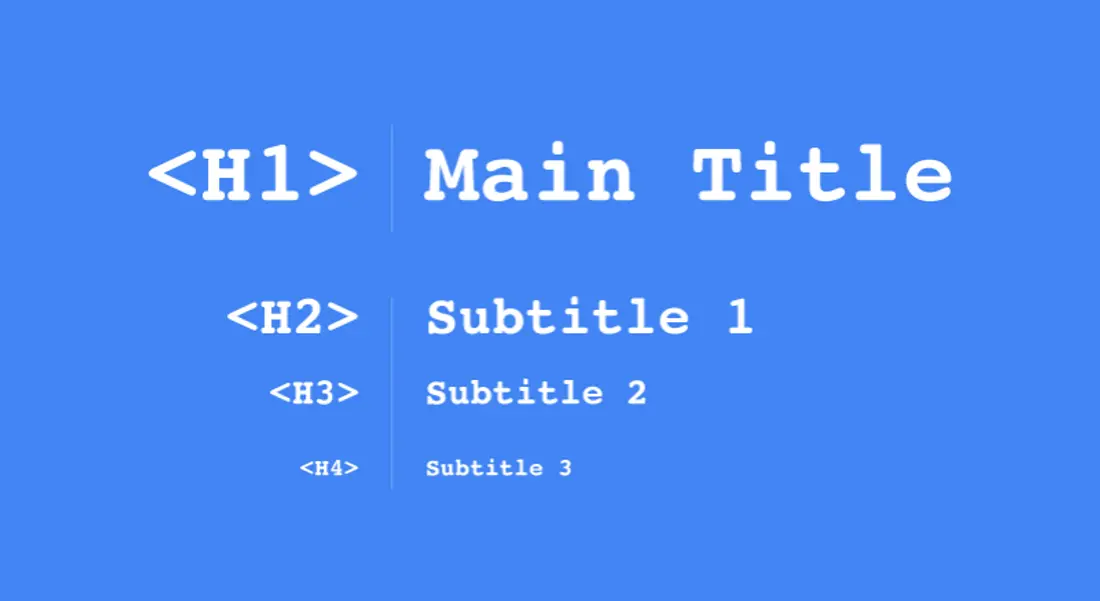Introduction
Heading tags (H1, H2, etc.) play a crucial role in both the user experience and search engine optimization (SEO) of a web page. Properly optimizing heading tags helps search engines understand the structure and hierarchy of your content, improves readability, and enhances the relevance of your page for targeted keywords. In this blog post, we will explore strategies to optimize heading tags for SEO success and improved user engagement.
Use H1 Tag for Page Titles
The H1 tag should be used for the main title of your web page. It should accurately summarize the content and contain relevant keywords. Search engines consider the H1 tag as a strong indicator of the page’s topic and relevance. Ensure that each page on your website has a unique and descriptive H1 tag that reflects its content and target keywords.
Incorporate Keywords Naturally
Include targeted keywords naturally within your heading tags. While it’s important to optimize your headings for SEO, avoid keyword stuffing or using irrelevant keywords. Focus on providing value and readability to users. Use variations and synonyms of your target keywords to maintain a natural language approach and enhance the semantic relevance of your content.
Organize Content with H2 and Subsequent Heading Tags
Hierarchy and organization are key when it comes to heading tags. Use H2 tags to break down your content into meaningful sections and subtopics. Consider the logical flow of information and use H3, H4, etc., tags for further subheadings as needed. This hierarchical structure not only aids search engines in understanding your content but also improves the readability and scannability for users.
Capture User Attention with Heading Tags
Heading tags should be attention-grabbing and engage users. Use compelling and descriptive language to entice readers to continue reading the content. Make your headings concise, specific, and focused on addressing the user’s intent. By using clear and captivating headings, you can keep users engaged and encourage them to explore further.
Optimize for Featured Snippets
Featured snippets are concise summaries of content that appear at the top of search results, providing users with quick answers to their queries. Optimizing your heading tags can increase the chances of your content being selected for featured snippets. Structure your content using H2 and H3 tags to clearly outline the main points, and provide direct, concise answers to common questions related to your topic.
Maintain Consistency and Readability
Consistency in heading tag usage across your website improves the user experience and makes it easier for search engines to understand your content. Use H1 for page titles, H2 for main section headings, and subsequent tags for subheadings. Ensure that your heading tags are easy to read and understand. Use appropriate font sizes and formatting to differentiate headings from regular text.
Combine Heading Tags with Rich Snippets
Rich snippets are additional elements that enhance search engine results, such as star ratings, images, or breadcrumbs. Combine your optimized heading tags with structured data markup to provide search engines with more context about your content. This can improve the visibility and click-through rates of your web pages in search results.
Regularly Review and Update Heading Tags
As your content evolves, it’s important to review and update your heading tags periodically. Keep them aligned with the current focus and keywords of your content. Regularly monitor your website analytics and search console data to identify opportunities for improvement and ensure that your heading tags reflect the most relevant and valuable aspects of your content.
Conclusion
Optimizing heading tags is essential for SEO success and improved user engagement. By using the H1 tag for page titles, incorporating keywords naturally, organizing content with H2 and subsequent tags, capturing user attention, optimizing for featured snippets, maintaining







